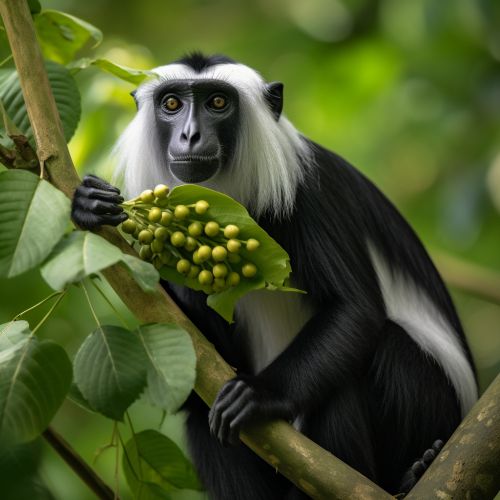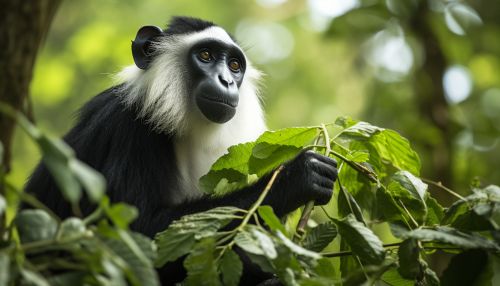Colobinae
Taxonomy and Evolution
The subfamily Colobinae is a diverse group of Old World monkeys that includes 61 species across 10 genera. They are part of the larger family Cercopithecidae, which also includes the subfamily Cercopithecinae. Colobinae are further divided into two tribes: Colobini, which are found in Africa, and Presbytini, which are found in Asia.
Colobinae are believed to have diverged from their closest relatives, the Cercopithecinae, around 16.5 million years ago during the Miocene epoch. This divergence was likely driven by a shift in dietary habits, with the ancestors of Colobinae adapting to a diet of leaves and other hard-to-digest plant material.


Physical Characteristics
Colobinae are medium to large-sized monkeys, with body lengths ranging from 40 to 80 cm, not including the tail. They are characterized by their slender bodies, long tails, and the distinctive 'ruminant-like' digestive system, which is unique among primates. This adaptation allows them to ferment and break down tough plant material in their enlarged, sacculated stomachs.
Another distinguishing feature of Colobinae is their dentition. They possess sharp, elongated lower incisors and canines, which they use to slice through leaves and unripe fruit. This dental adaptation, known as the 'leaf-eating' or 'browsing' dentition, is a key feature that sets them apart from other Old World monkeys.
Distribution and Habitat
Colobinae are widely distributed across the tropical and subtropical regions of Africa and Asia. In Africa, they are found from Senegal in the west to Ethiopia in the east, and as far south as Angola and Zambia. In Asia, their range extends from India and Sri Lanka in the west, through Southeast Asia, and into China and Japan in the east.
They inhabit a variety of forest habitats, including tropical rainforests, montane forests, and mangrove forests. Some species are also found in savannah and grassland habitats. They are generally arboreal, spending most of their time in the treetops, although some species will come down to the ground to forage or travel.
Diet and Behavior
Colobinae are primarily folivorous, meaning they eat a diet that consists mostly of leaves. However, they also consume fruits, seeds, flowers, and occasionally insects. Their specialized digestive system allows them to break down the cellulose in leaves and extract the maximum amount of nutrients.
Colobinae are social animals, living in groups that can range from a few individuals to several dozen. Group composition varies among species, with some forming single-male, multi-female groups, and others forming multi-male, multi-female groups. They are generally diurnal, active during the day and sleeping at night.
Conservation Status
Many species of Colobinae are threatened by habitat loss and hunting. Deforestation for agriculture, logging, and human settlement is reducing their habitat, while hunting for bushmeat and the pet trade is a direct threat to their populations. Several species are listed as endangered or critically endangered on the IUCN Red List.
Conservation efforts for Colobinae include habitat protection and restoration, anti-poaching measures, and captive breeding programs. Public education and community involvement are also crucial for their long-term survival.
